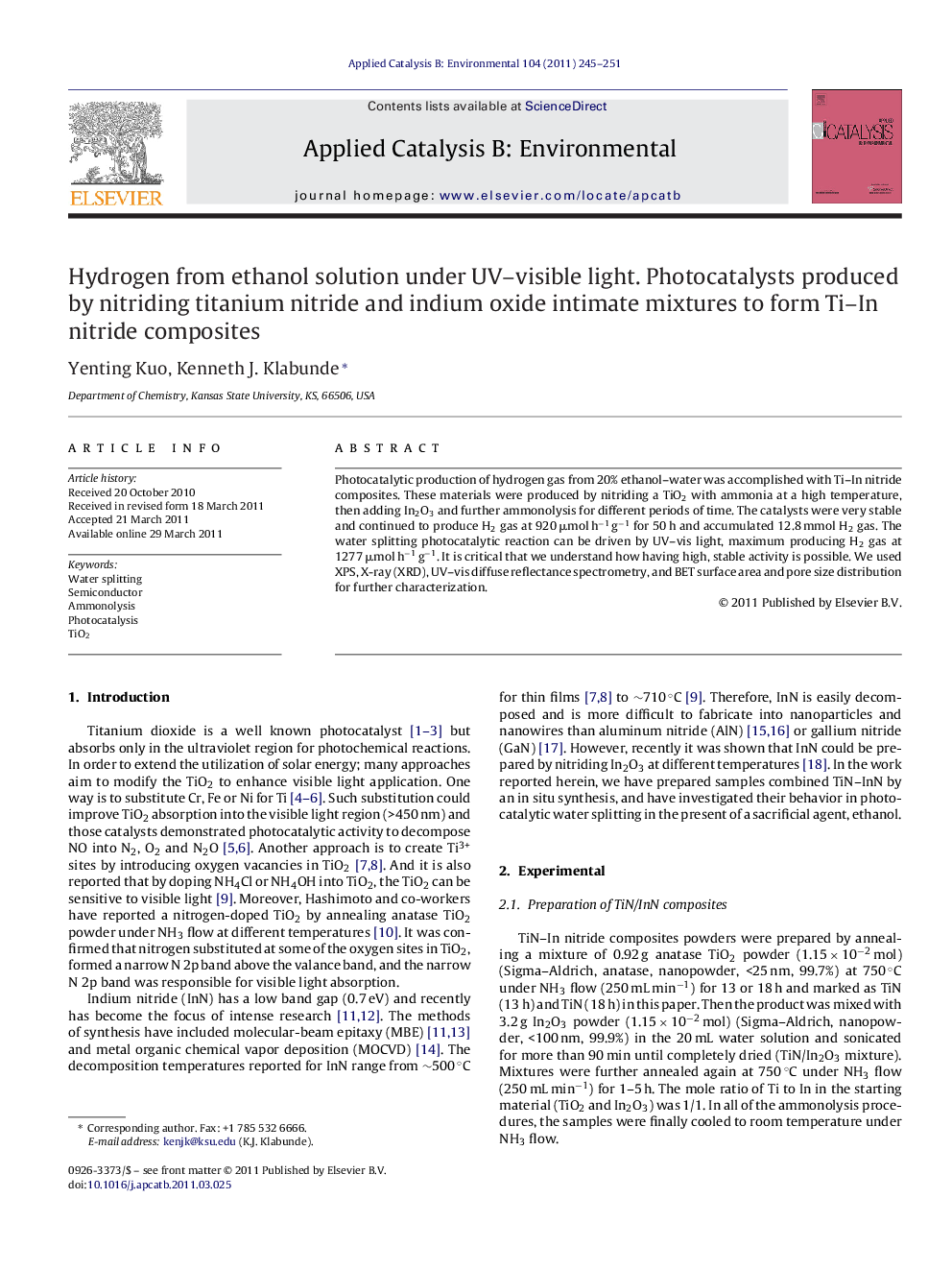| کد مقاله | کد نشریه | سال انتشار | مقاله انگلیسی | نسخه تمام متن |
|---|---|---|---|---|
| 46960 | 46454 | 2011 | 7 صفحه PDF | دانلود رایگان |

Photocatalytic production of hydrogen gas from 20% ethanol–water was accomplished with Ti–In nitride composites. These materials were produced by nitriding a TiO2 with ammonia at a high temperature, then adding In2O3 and further ammonolysis for different periods of time. The catalysts were very stable and continued to produce H2 gas at 920 μmol h−1 g−1 for 50 h and accumulated 12.8 mmol H2 gas. The water splitting photocatalytic reaction can be driven by UV–vis light, maximum producing H2 gas at 1277 μmol h−1 g−1. It is critical that we understand how having high, stable activity is possible. We used XPS, X-ray (XRD), UV–vis diffuse reflectance spectrometry, and BET surface area and pore size distribution for further characterization.
. Schematic representation showing the particle size, different crystal sizes of compounds and the ratio of compounds for the composite.Figure optionsDownload as PowerPoint slideHighlights
► TiN–In nitride composite of TiN and InN was prepared by nitridation of TiO2 first, then mixed with In2O3 and ammonolysis again under a NH3 flow of 250 mL min−1.
► The TiN–In nitride composite can stably generate H2 gas maximum at 1277 μmol h−1 g−1 (∼13% quantum efficiency) in the ethanol aqueous solution under UV light.
► The XRD and XPS spectra confirmed that the prepared TiN–In nitride composite had nitrogen substituted at some of the oxygen sites in the TiO2 and In2O3.
Journal: Applied Catalysis B: Environmental - Volume 104, Issues 3–4, 18 May 2011, Pages 245–251